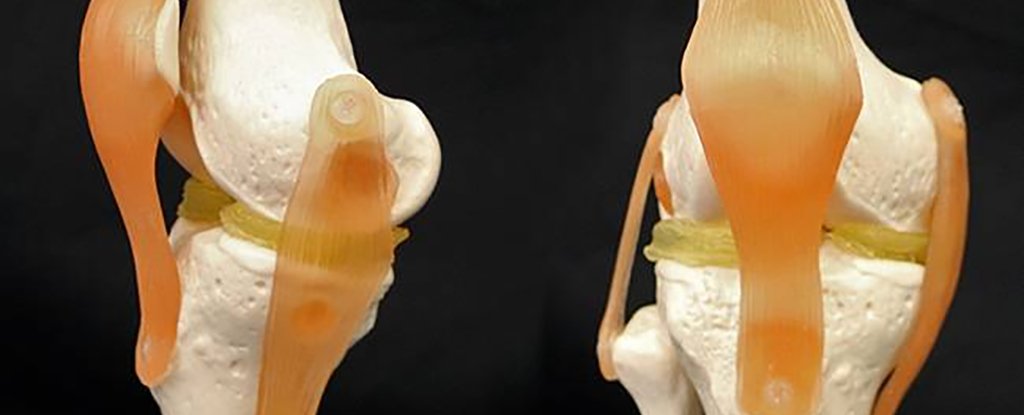Researchers at Duke University, located in the US state of North Carolina, have created a new cartilage-like hydrogel material which may make the task of knee replacement much easier and cheaper. Since the material is 3D printable, it can be made to exactly match a patient’s anatomy.
The human knee is one of the largest and most complex joints in the body. The knee joins the thigh bone to the shin bone. Our knees have with meniscus, a built-in shock absorber that cushions our knees.
A torn meniscus in an adult body cannot heal on its own, and broken ones often need removal of the damaged meniscus or replacement with plastic implants.

3D printing process, Image courtesy Duke University/ Feichen Yang
But the real issue is the implants which are done nowadays. The implants are not as strong or elastic as the real thing; moreover, the implants do nothing to support healing around the knee.
Hydrogels are biocompatible and have a similar molecular structure to cartilage. Feichen Yang, a graduate student in Wiley’s lab and an author on a related paper, said, “A meniscus is not a homogenous material. The middle is stiffer, and the outside is a bit softer. Multi-material 3D printers let you print different materials in different layers, but with a traditional mold you can only use one material.”
Benjamin Wiley, an associate professor of chemistry, said, “I hope that demonstrating the ease with which this can be done will help get a lot of other people interested in making more realistic printable hydrogels with mechanical properties that are even closer to human tissue.”







